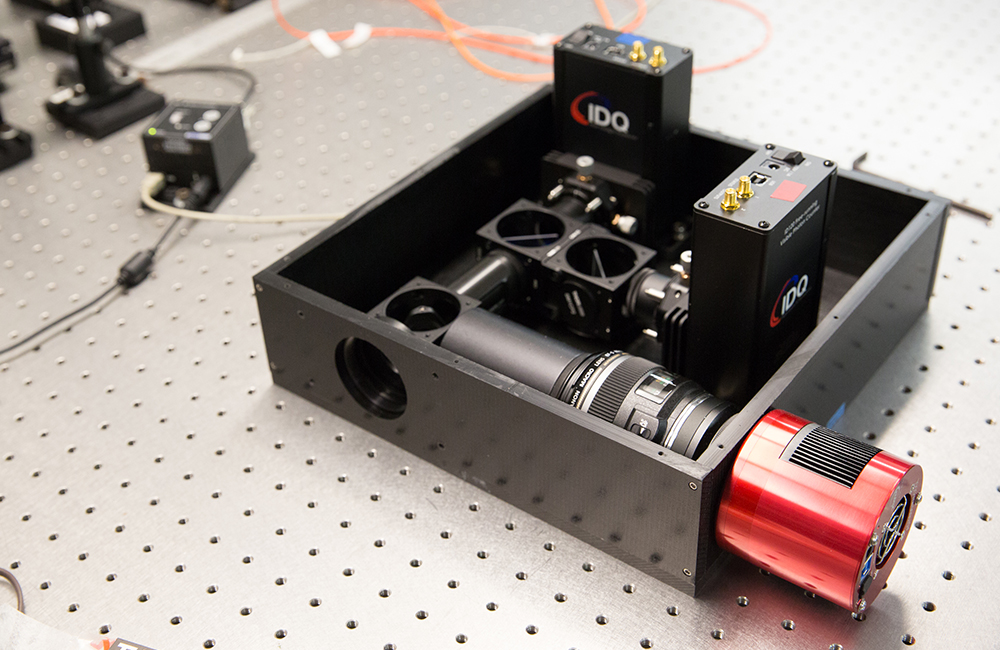Physics Paper Delves Inside the Box
April 24, 2018
Somewhere in the basement of the Harvey Mudd Department of Physics, there’s a nameless black box. But its unremarkable looks and lack of an official moniker belie its capabilities.
Built in 2016 by mathematics and physics major Calvin Leung ’17 and physics major Amy Brown ’17, the black box contains photon detectors, a camera lens and mirrors and is able to turn photons from distant astronomical sources into an unpredictable binary sequence that can be used to improve several tests of the foundations of quantum mechanics.
In a paper published today by Physical Review A, Leung, Brown and their co-authors, including physics professor Jason Gallicchio, characterize their instrument and validate its performance, confirming that it can be used to test Bell’s inequalities. Titled, “Astronomical random numbers for quantum foundations experiments,” the paper describes the unique design requirements of an “astronomical random number generator” and its applications to two tests of quantum foundations.
Leung and Gallicchio have used the instrument in several experiments, including taking it to the NASA Jet Propulsion Laboratory observatory on Table Mountain near Wrightwood, California, where they observed light from far-off sources, including stars and quasars.
In 2016, when Leung and Gallicchio performed a novel test of one of Bell’s inequalities, current technology allowed them to determine measurement settings based on unpredictable photon emission from Milky Way stars 600 light years away. Now, with improvements made to their instrument, Gallicchio and Leung say it is suitable for next-generation tests involving quasars that emitted their light billions of years ago, when the universe was only one-tenth of its current age.
“This work leverages cutting-edge techniques and technologies in observational astrophysics to test foundational questions in quantum physics,” says Leung, recipient of a 2017 LeRoy Apker Award from the American Physical Society, a 2016 Astronaut Scholarship and an NSF Graduate Research Fellowship Honorable Mention. This fall, he begins the PhD program in physics at MIT with a National Defense Science and Engineering Graduate Fellowship.
Gallicchio specializes in experimental cosmology—the study of the origin and evolution of the universe. He spent a year at the South Pole Telescope where he researched polarization of the Cosmic Microwave Background (CMB) and served as a South Pole NSF Station Science Leader. He is also interested in devising new ways to conduct fundamental tests of quantum mechanics and has designed improvements for Bell-type tests of quantum entanglement, like this black box experiment.
